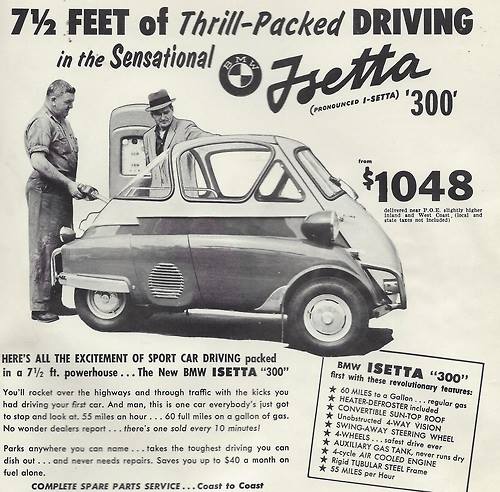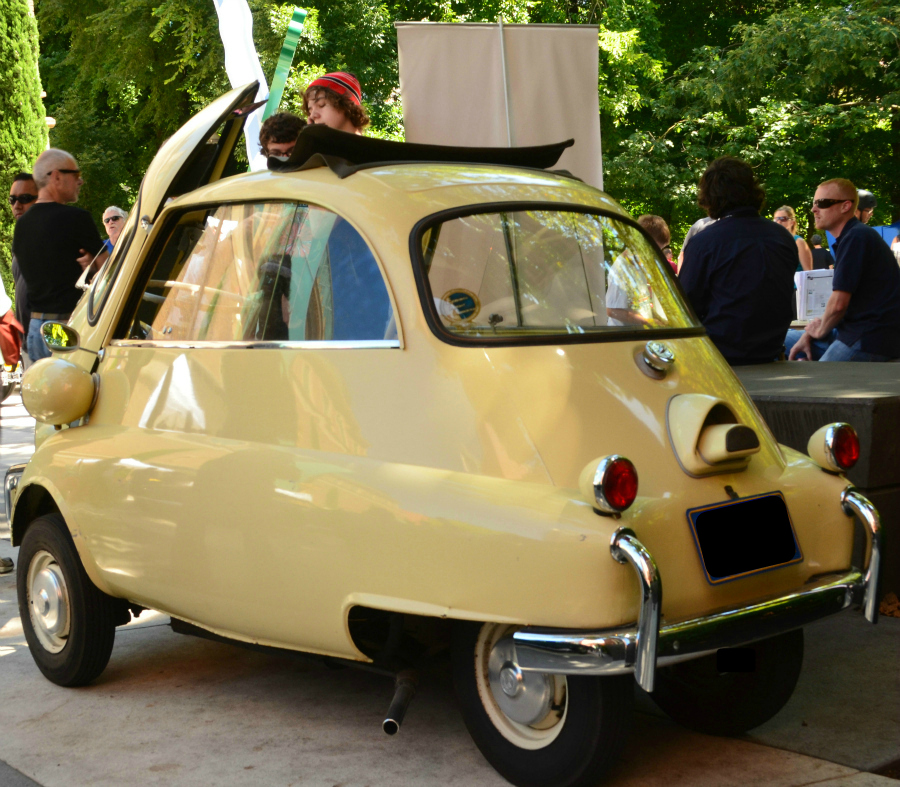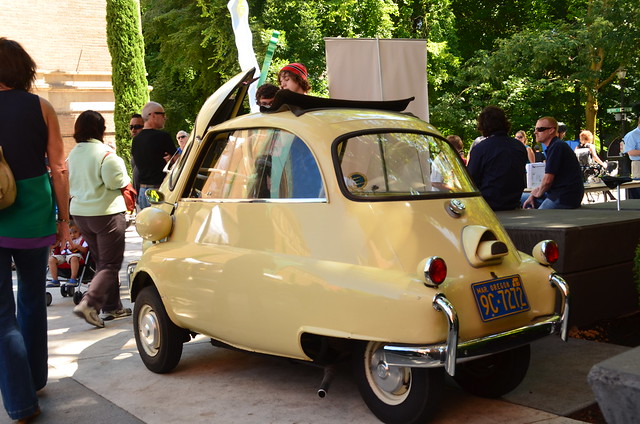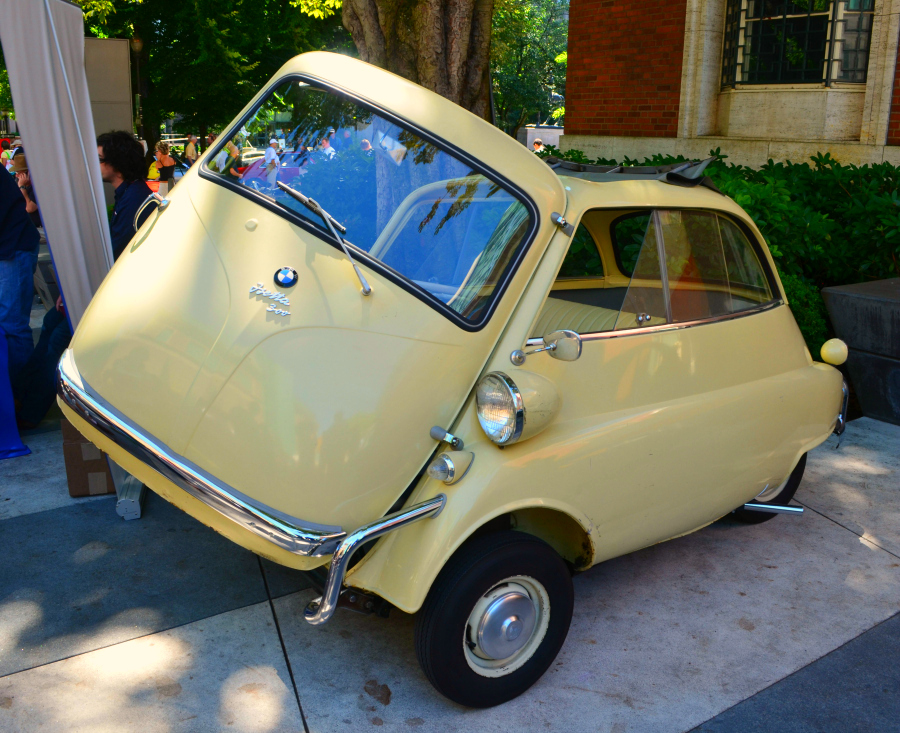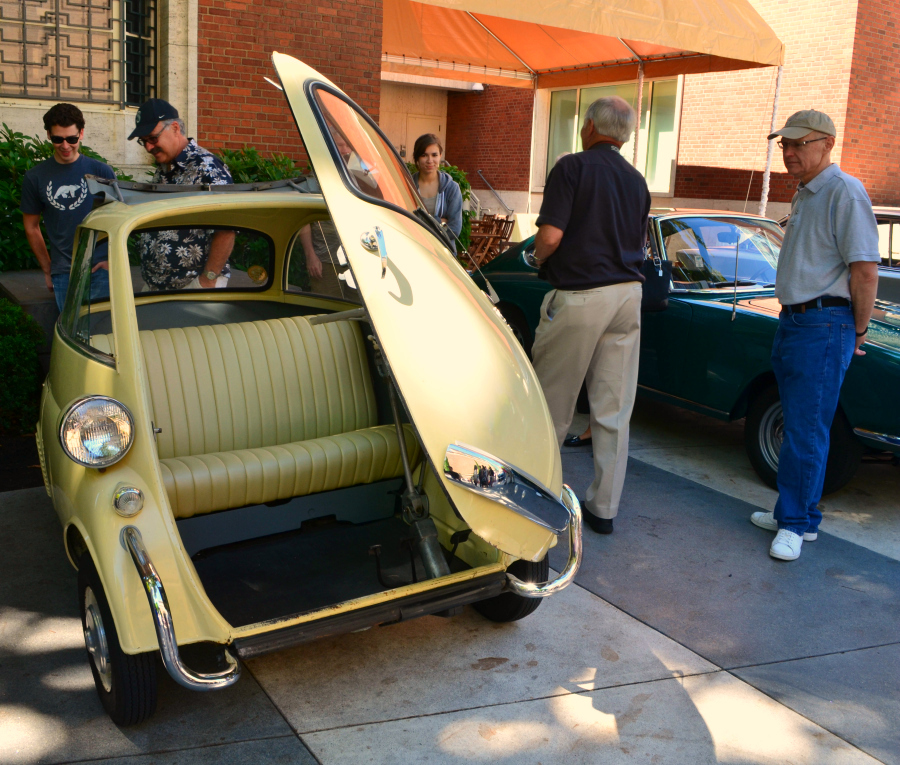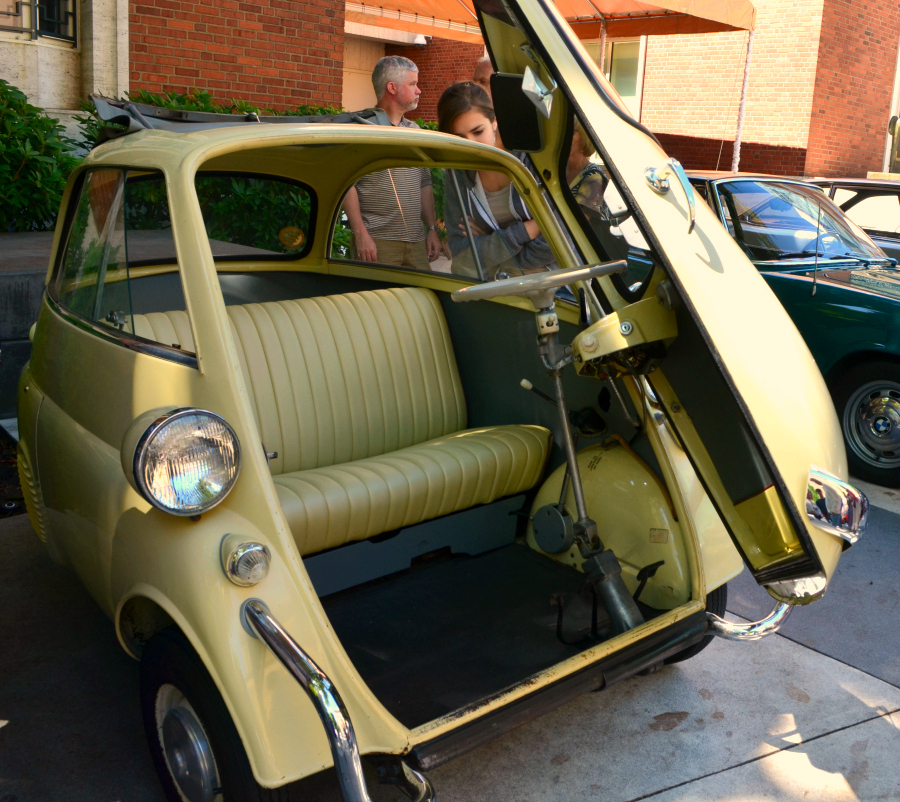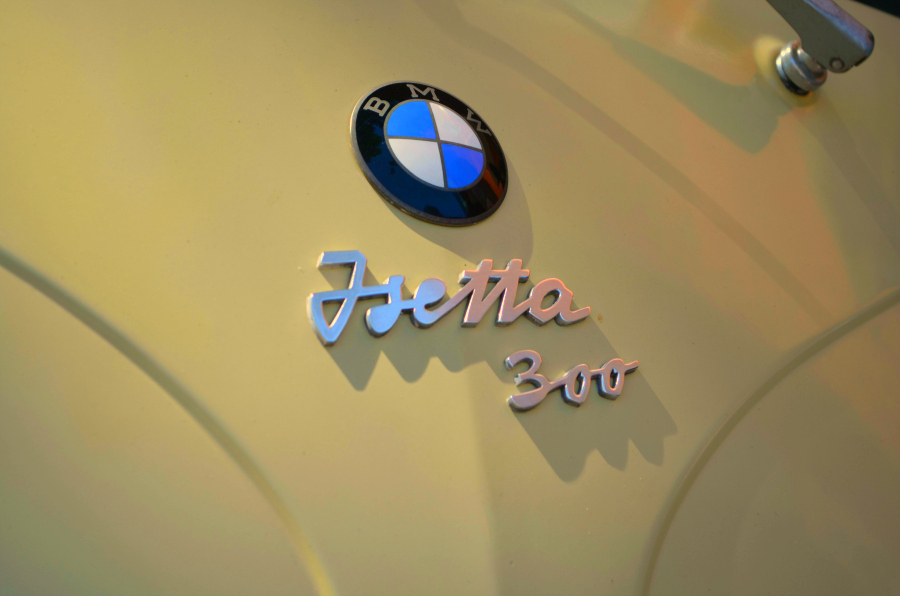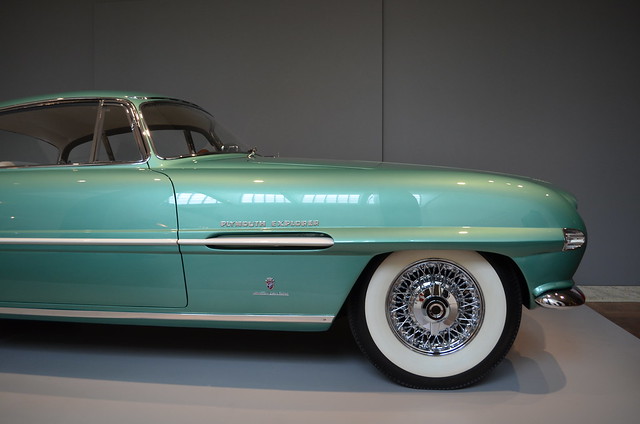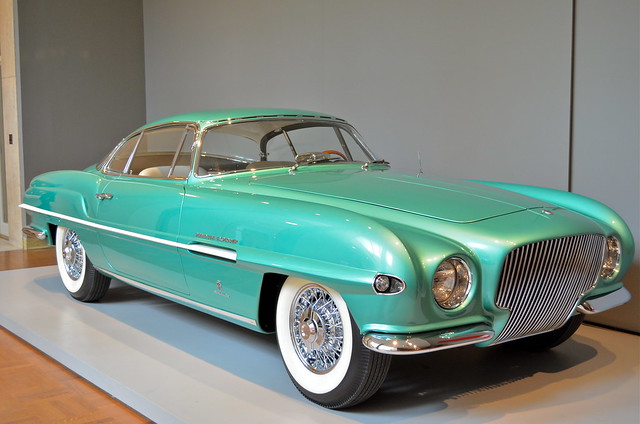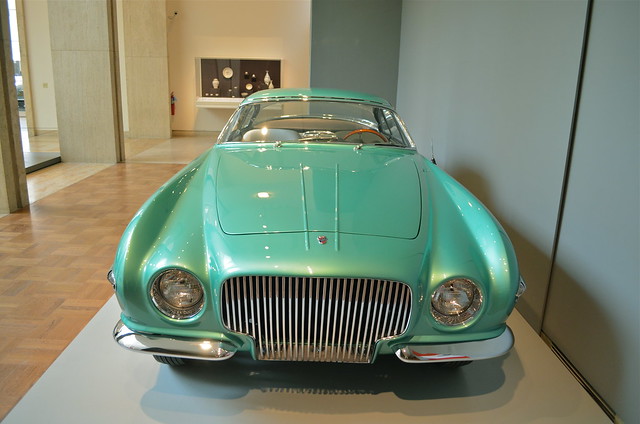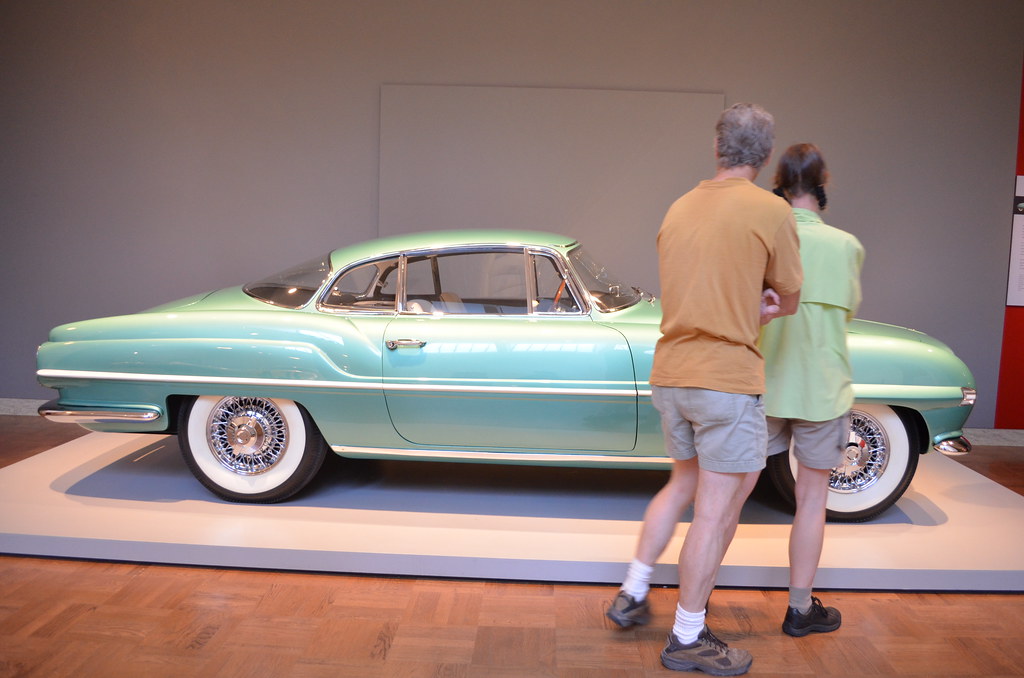
Serendipity, I fouond the perfect photo to use for the Stylish CDP Theme Day in my Flickr account, one that I had taken on July 22, 2011, on my first visit to the Portland Art Museum exhibition, Allure of the Automobile. There are several more photos here; as you scroll down, you'll find them.
I adore the juxtaposition of the stylish 1954 Plymouth Explorer Coupe with the casually dressed man and woman admiring it. Here's something from The Oregonian about the automobile: 1954 Plymouth Explorer Sports Coupe: Chrysler was looking to upgrade its dowdy postwar image and turned to Ghia designer Luigi Segre to jazz things up in a series of Dodge concept cars called Firearrows. The Explorer Coupe quickly followed. Long, low and sexy but also roomy inside, the Explorer and its Ghia sisters had a sporty but quietly luxurious look that anticipated and helped inspire Detroit's ebullient designs of the later '50s and '60s.
More info about the automobile, found at Concept Carz: In the post-World War II era, the public were very enthusiastic about the so-called Concept Cars of 'Dream Cars.' Virgil M. Exner had been placed as head of Chrysler's Styling department and was responsible for improving Chrysler's rather stodgy late 1940's image. He turned to Carrozzeria Ghia in Turin, Italy, to produce a unique series of one-of-a-kind 'idea cars' on production Dodge, Chrysler and Plymouth chassis. Exner had sourced the work out to these Italian craftsman because they could build these one-of-a-kind cars more creatively and less expensively than any American company.
Exner designed the Chrysler K-310 Series, which was followed by three more Ghia-built Chrysler design studies: the C-200, the SS, and the D'Elegance, as well as the DeSoto Adventurer 1 coupe. Luigi Segre of Ghia was asked to produce a memorable quartet of cars for Dodge called the Firearrows. The Dodge Firearrow III was a precursor of the subsequent De Soto Adventurer II and Plymouth Explorer concept vehicles that followed.
The sleek, wide-mouthed Explorer was mounted on a 114-inch wheelbase Plymouth chassis and was just 54-inches tall. Powering the vehicle was a 230-cubic-inch Plymouth l-head six that offered a humble 110 horsepower. There was a semi-automatic transmission, twin exhausts that exited through the rear fenders, and wire wheels. The car was distinguished by elegant ivory-hued side reveals, vestigial fins, a metal green finish, a white leather interior with bucket seats and fitted luggage.
Along with giving the public a glimpse into future designs for the company, the Dodge Firearrows, DeSoto Adventurer and Plymouth Explorer significantly helped to rejuvenate the company's image. Chrysler's 'Forward Look' styling of 1955 - 1961 inspired other automakers to return to their drawing boards to revise their models which lacked Chrysler's fresh, Italian-inspired flair. The car debuted in the May 1954 Motor Trend. Despite its racy good looks, the Explorer was powered by the 110-horsepower, 230 cubic-inch, 6-cylinder engine coupled to a Hy-Drive transmission. The dream cars were the inspiration of Virgil Exner who was hired by Chrysler boss K.T. Keller to reinvigorate the Plymouth brand. Chrysler had discovered that there was considerable interest in 'dream car' design proposals, so much so that GM took its cars on tour, staging the elaborate Motoramas around the country. Throughout the 1950s, Chrysler displayed a string of dozens of cars penned by some of the leading styling houses in Europe.
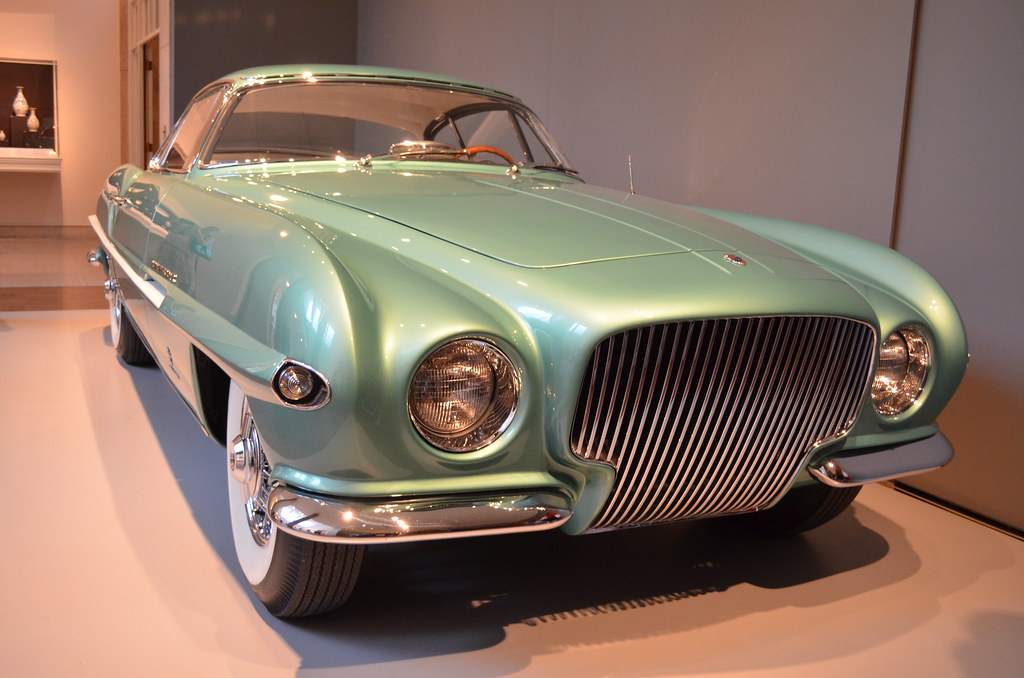
Here's that wide mouth mentioned above.
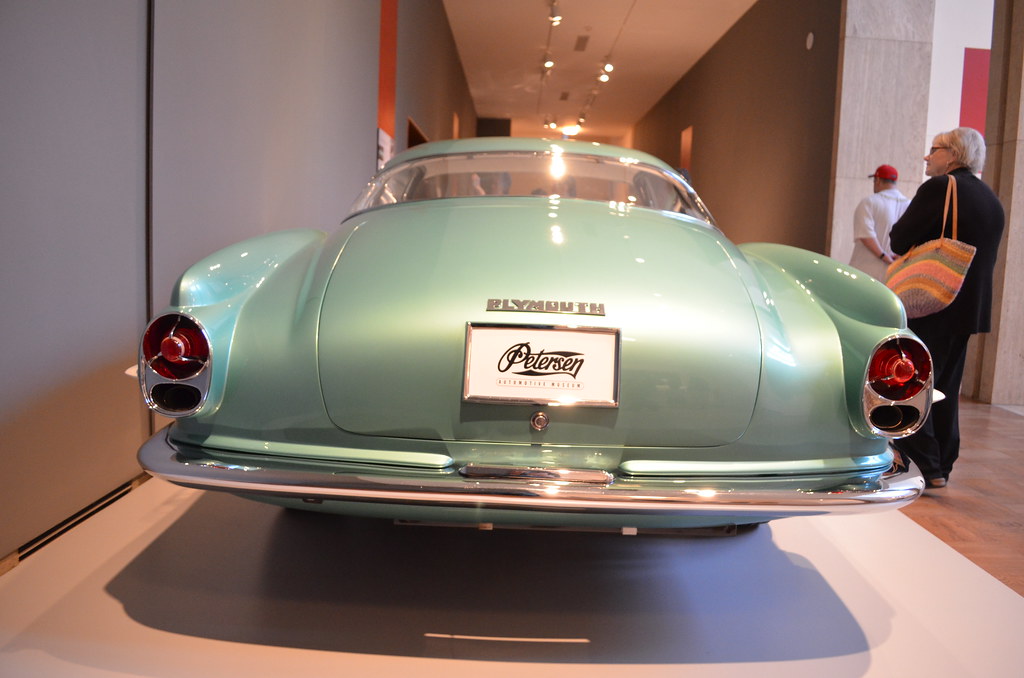
How the back of the automobile looks. Amazing to me, how aerodynamically smooth it looks. By the way, the stylish woman in black is my friend from work, Sharon, who accompanied me to the exhibit. It was free Friday entry, which we happily took advantage of by planning to head over to the museum right after work.
Found on the Internet, about the exhibition: Portland Art Museum Exhibits Cars as Art in 'The Allure of the Automobile'by KC Cowan OPB, June 9, 2011 5 p.m.
To some people, a car is just a form of transportation — a way to get from here to there. But to others, especially serious collectors, the automobile can be a work of art.
That’s the idea behind “The Allure of the Automobile,” a new show at the Portland Art Museum. Curator Ken Gross says he wanted to celebrate the essence of 20th century industrial design on wheels.
“These are hollow, rolling sculptures,” said Gross at the press preview.
The collection consists of 16 of the world’s most luxurious and rare cars. In some cases, the automobiles are truly one-of-a-kind. Either it was the only car like that ever made or is the only one surviving. Top collectors as well as museums loaned the cars for this show, a feat that museum officials said was unprecedented.
“We have cars from collectors who never loan their cars out,” said Museum Director Brian Ferriso. He hopes the show will attract people who would not ordinarily come to the museum.
“Taking objects in the world today and celebrating it in a museum changes the concept of it,” Ferriso said.
Among the beauties now in the main-floor gallery of the museum: a 1953 Porsche 550, Prototype; a 1931 Duesenberg SJ Derham Convertible Sedan; 1937 Talbot-Lago T150-C-SS “Teardrop” Coupe and a 1961 Aston Martin DB4GT Zagato Coupe.
The show will run through September 11th, and if you plan to go, you might want to consider visiting on a Saturday for the Cars in the Park exhibit. Local car collectors will show off their vehicles all summer long Saturdays from 10am to 5pm. Each Saturday will have a theme – from Italian Cars to Hot Rods to Green Cars.
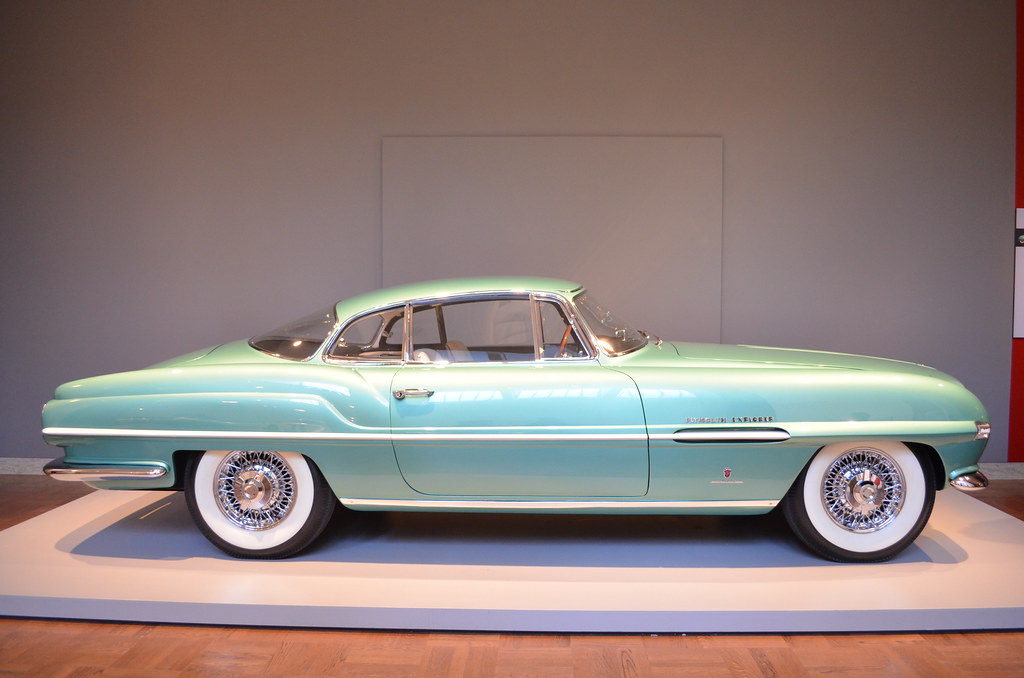
A look at the passenger side of the automobile.
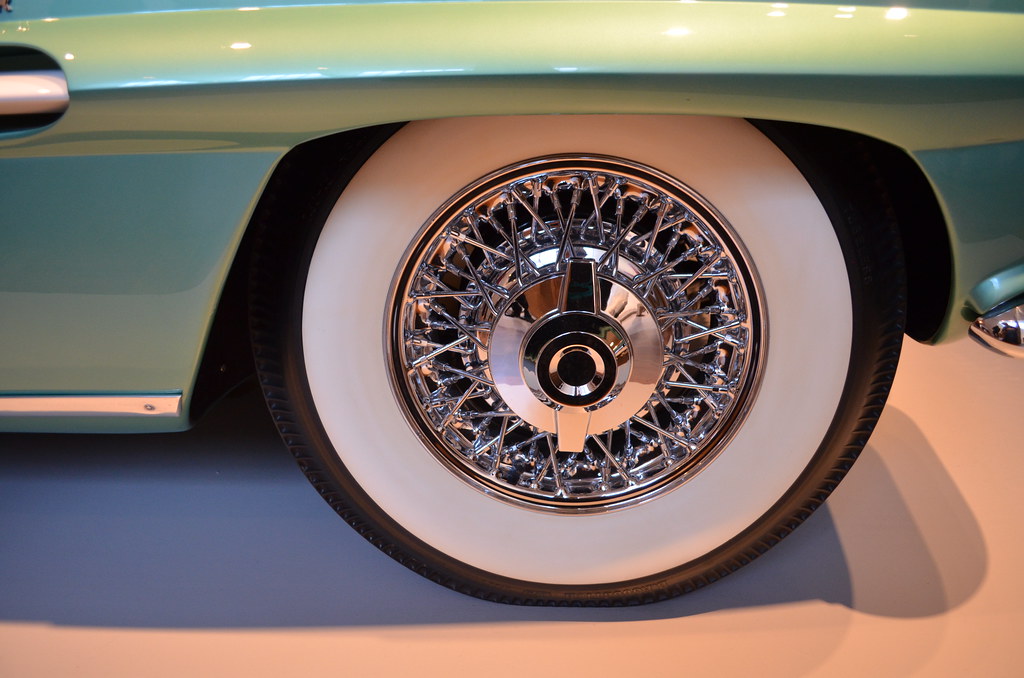
A close up of the front passenger side wheel. Exquisite.
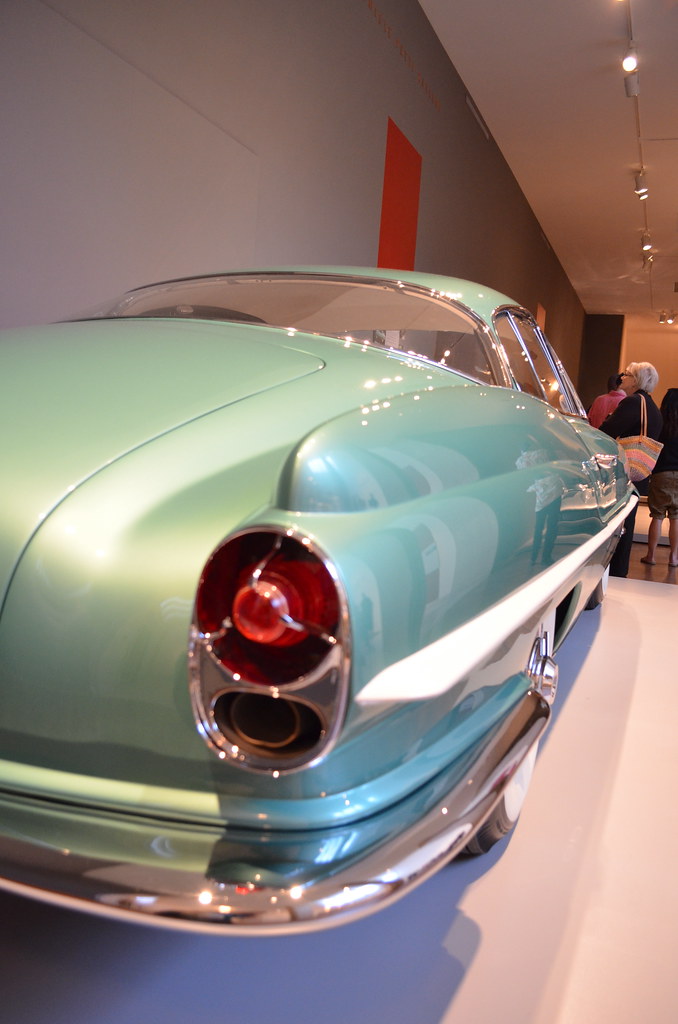
A look along the passenger side of the automobile.

